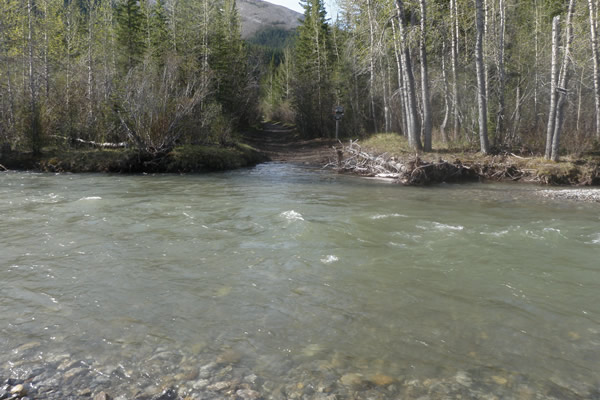 Water Temperature
Water Temperature will also make a big difference in how and if you can cross a water obstacle.
It may not seem like much, but this 'little creek' is very powerful and learning when and where you can cross a water obstacle is a life saving survival skill.
I just got stopped this week trying to cross a creek (Hummingbird Creek in the Eastern Slopes of the Alberta Rockies;
Link to Google Map Location I took with my Spot) in the Rockies due to a
Combination of High Water/Fast Flowing Water and Very Cold Water Temperature.
i.e.
if the Water had been Warmer I may have pushed across anyhow in spite of the Fast Waist Deep Water. In this case it was so cold and I stopped a third of the way across. I actually tried slightly upstream of the picture where the creek broke up into two streams and I could find two locations to cross that were a little shallower. Good Scouting of better locations can make a difference but it this case it did not help.
Over time I have learned that if is is difficult to cross in the morning when the flow rates are slow, then it will be impossible to cross in the evening when you get back. This is a major factor as I consider a Water Crossing and or in this case decide to turn back once I enter the Water. I also unbuckle my pack, walk upstream when I cross, and use a staff for extra support when I cross.
Not stopping is a survival situation in the making. Many individuals and groups get trapped each year in the wilderness when flow levels change on hot spring afternoons.
Do not take the crossing of Water Obstacles lightly, each crossing will have its own potential problems and possible consequences, including the possibility of being swept down stream.